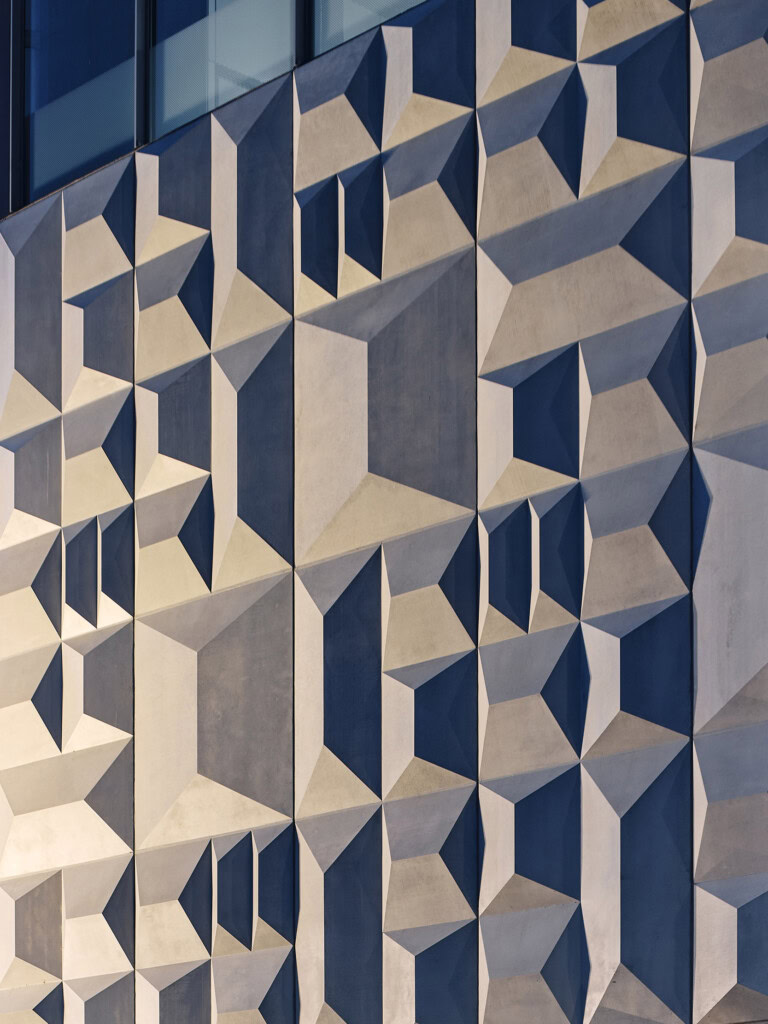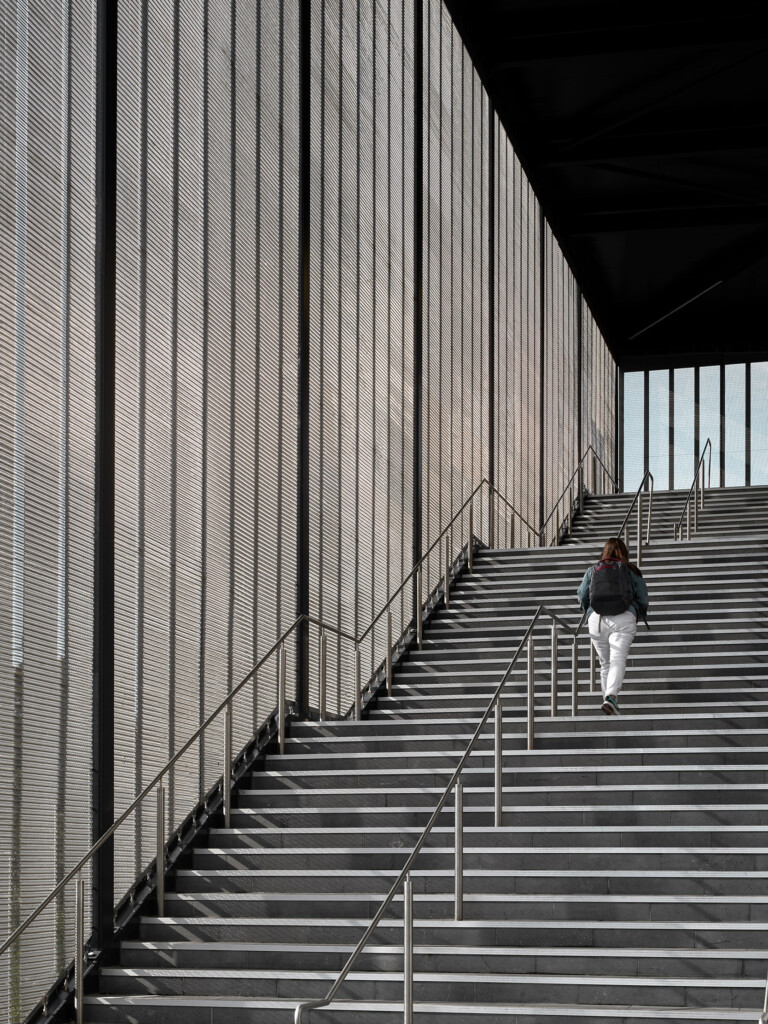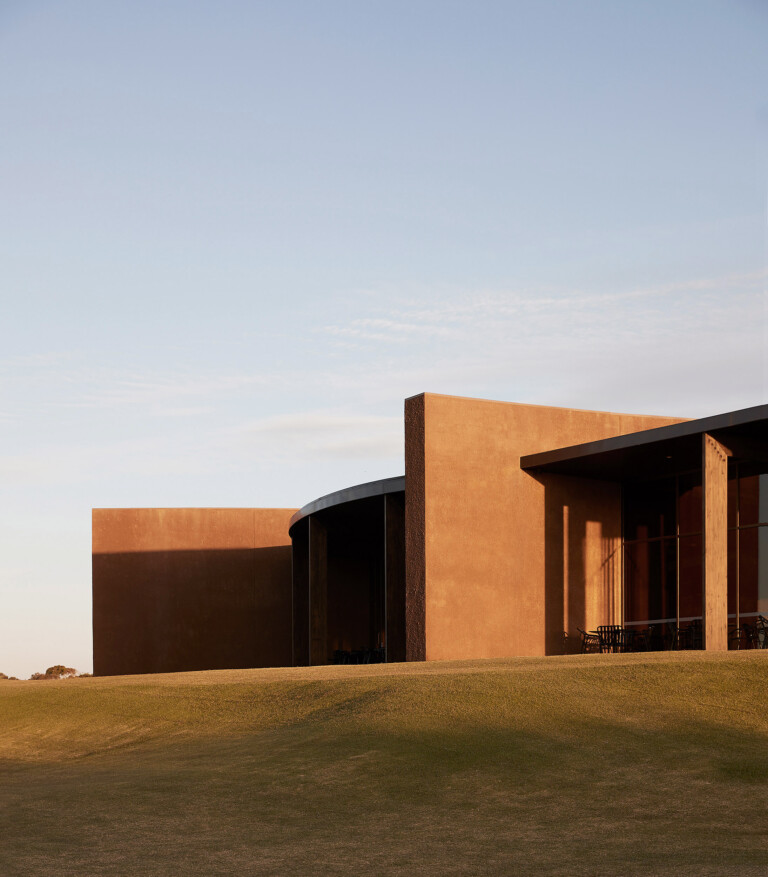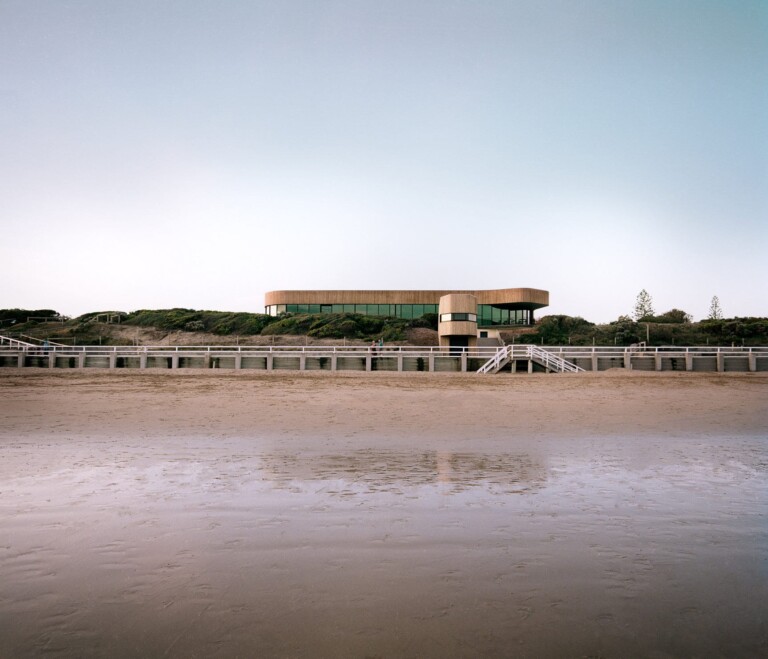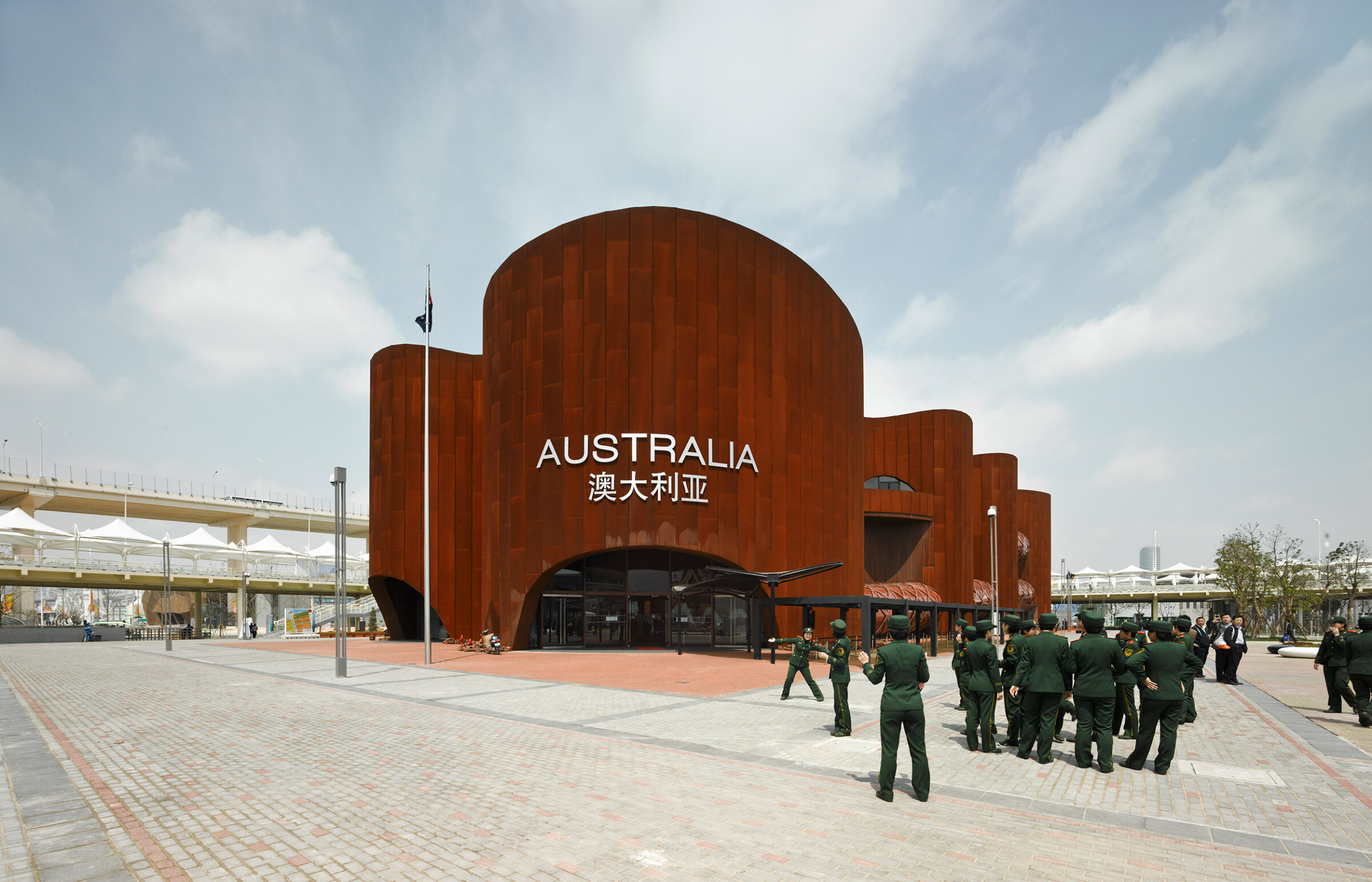
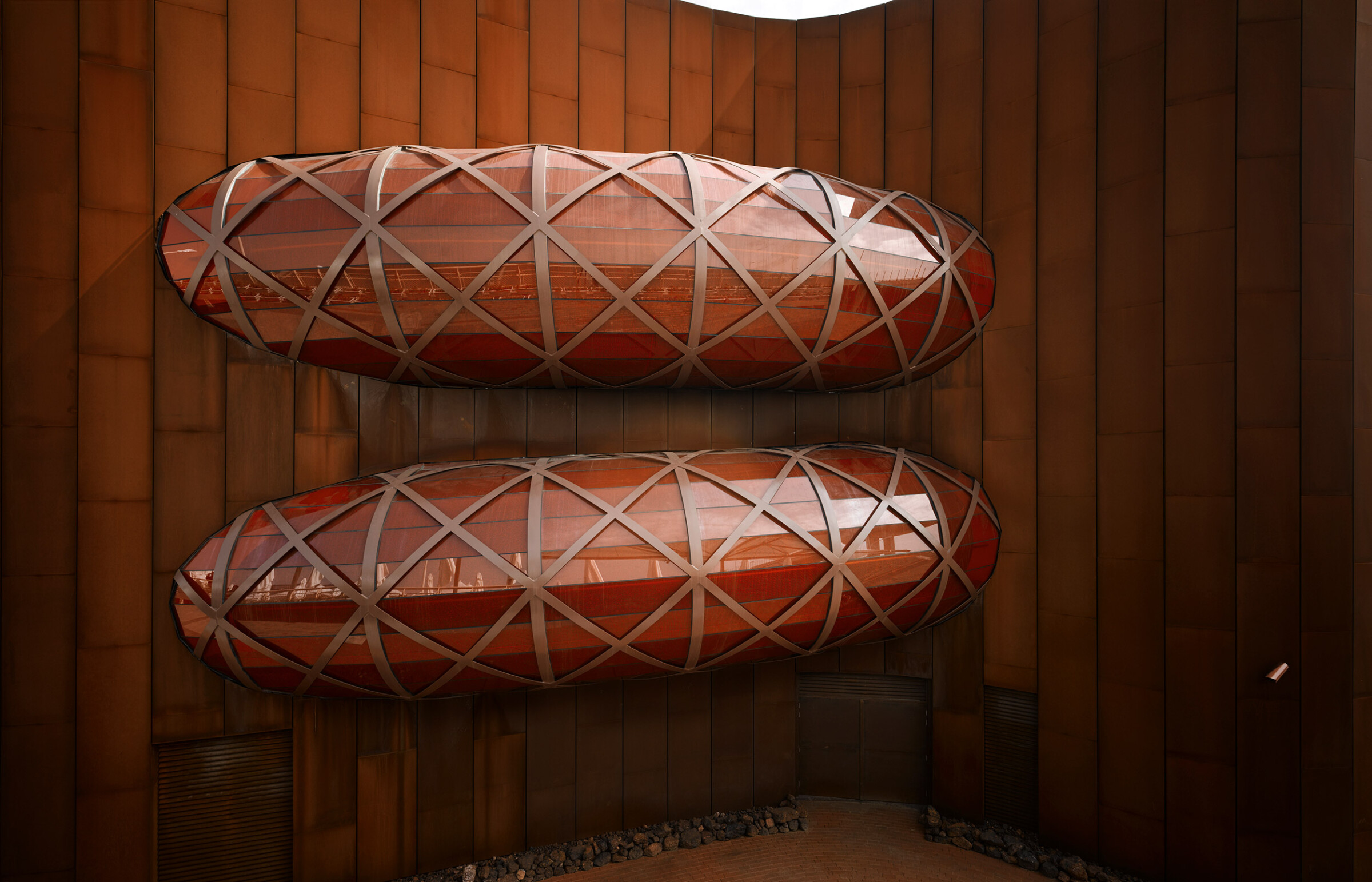
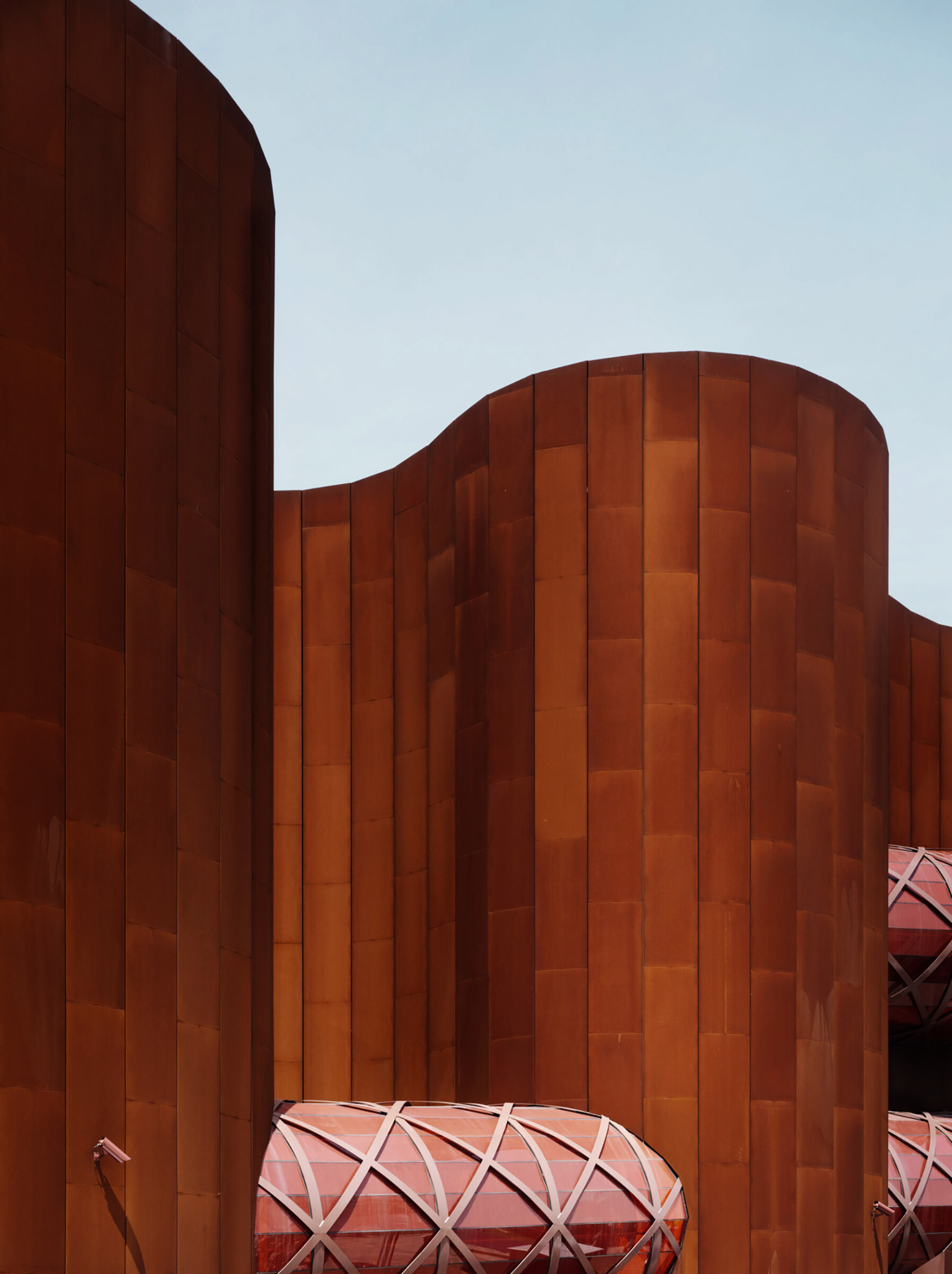
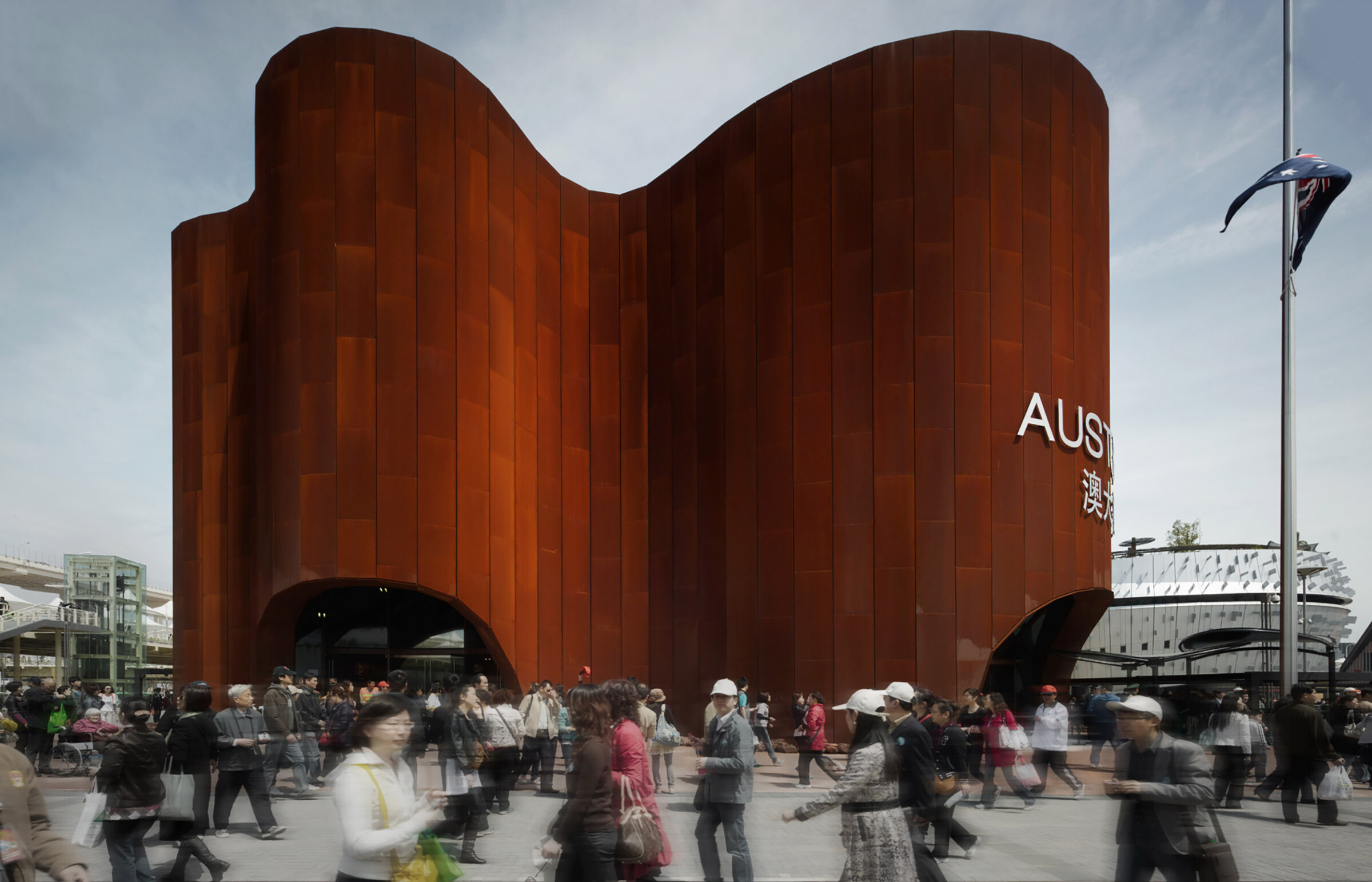
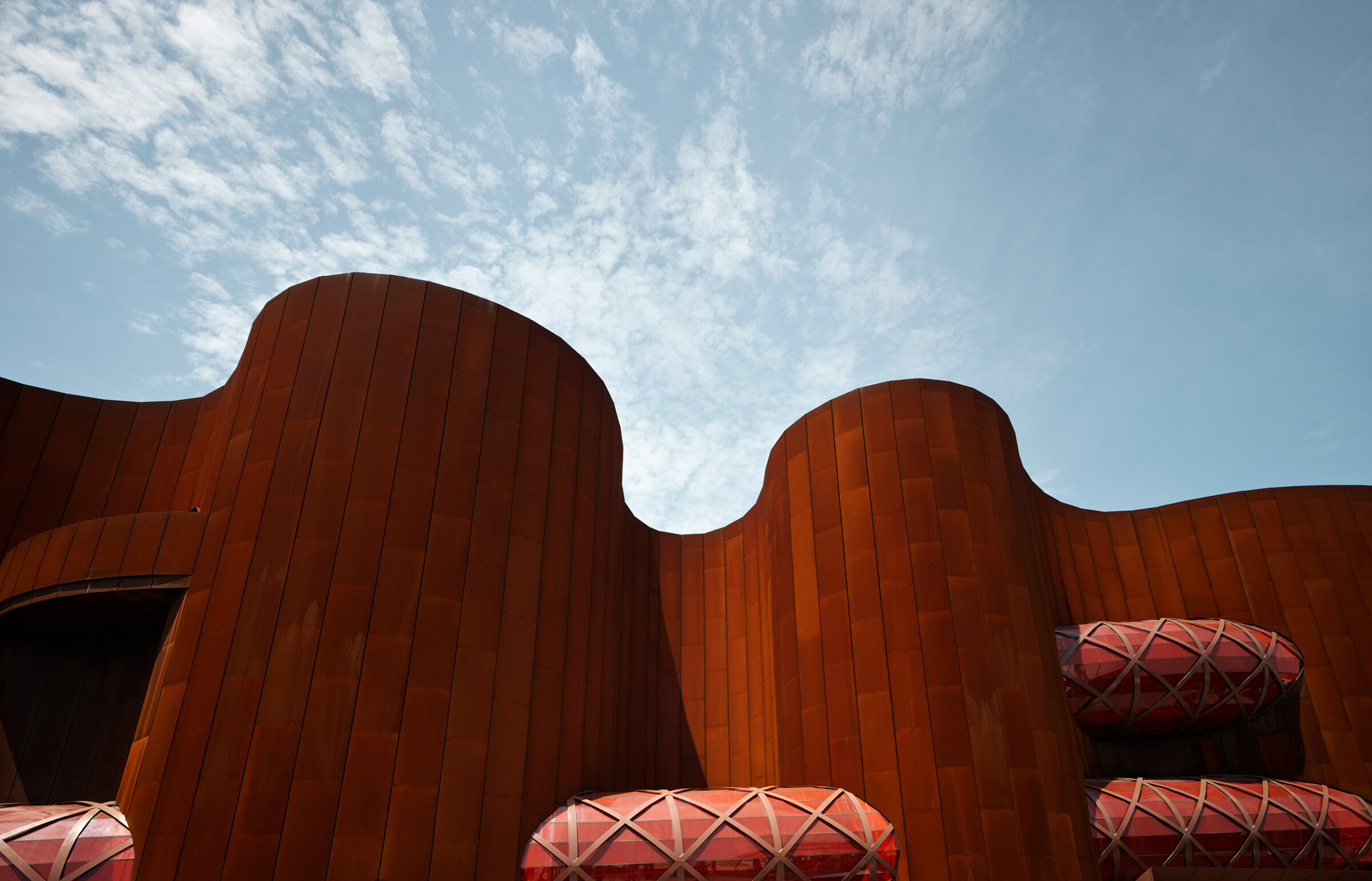
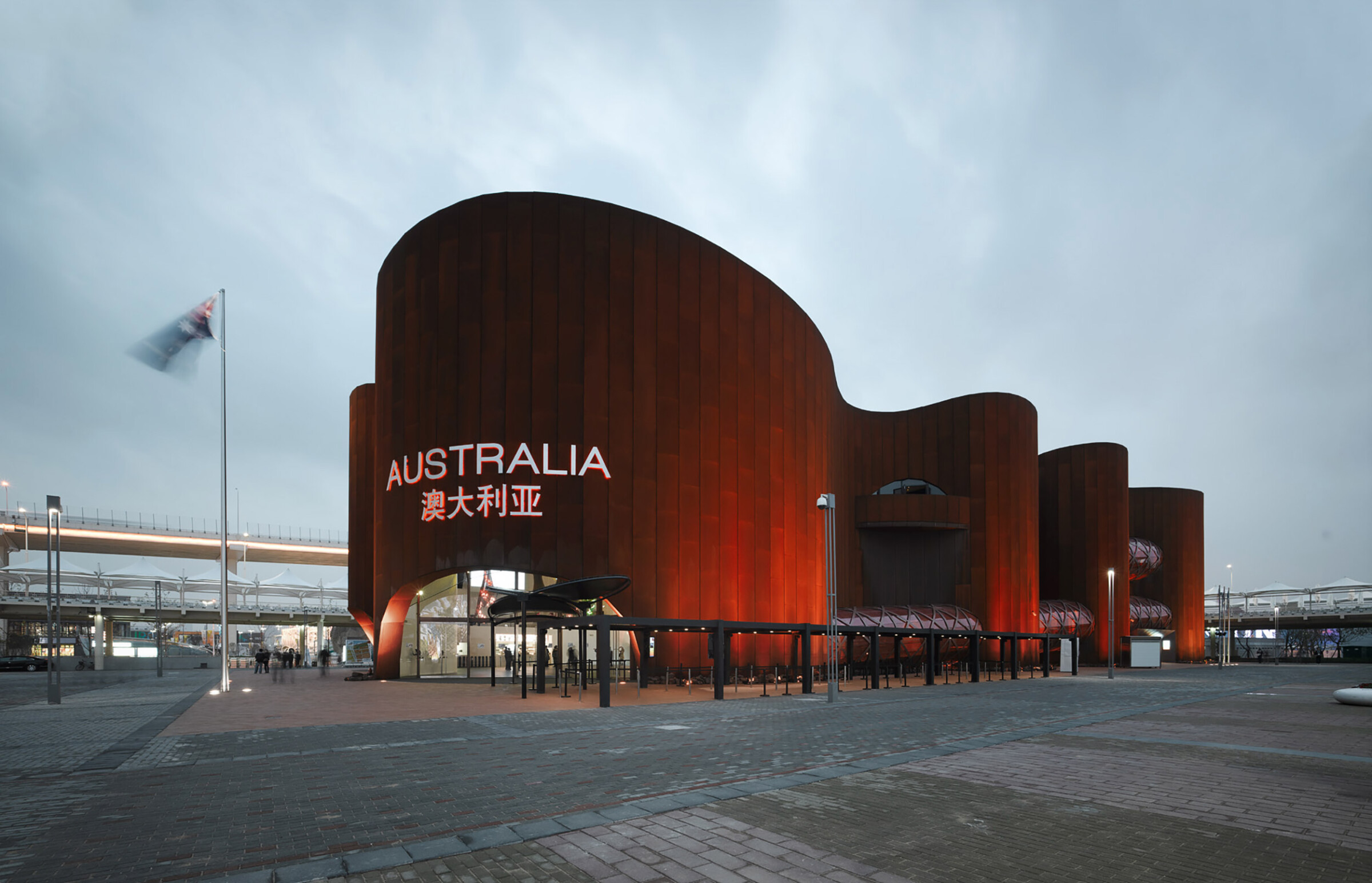
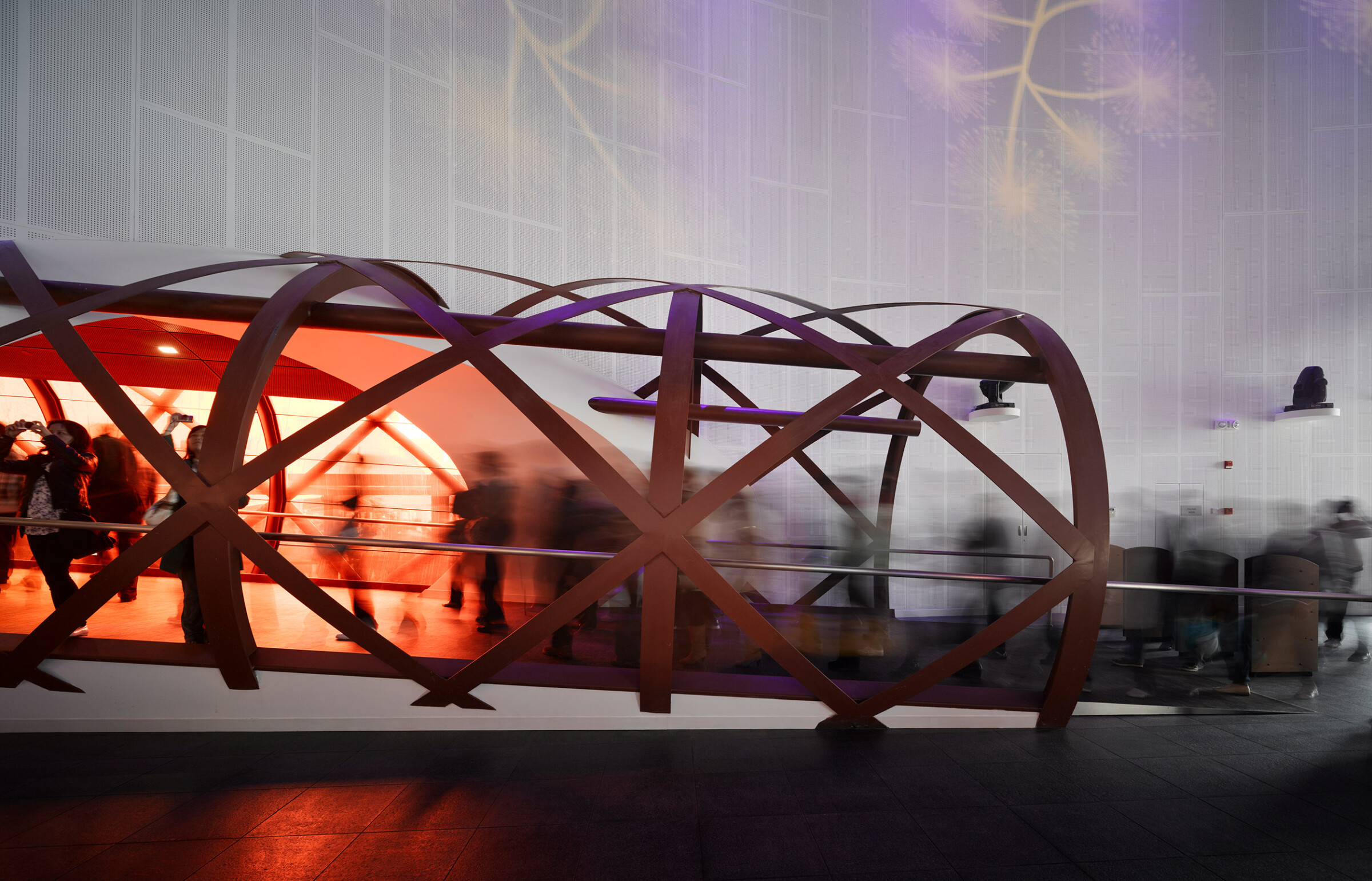
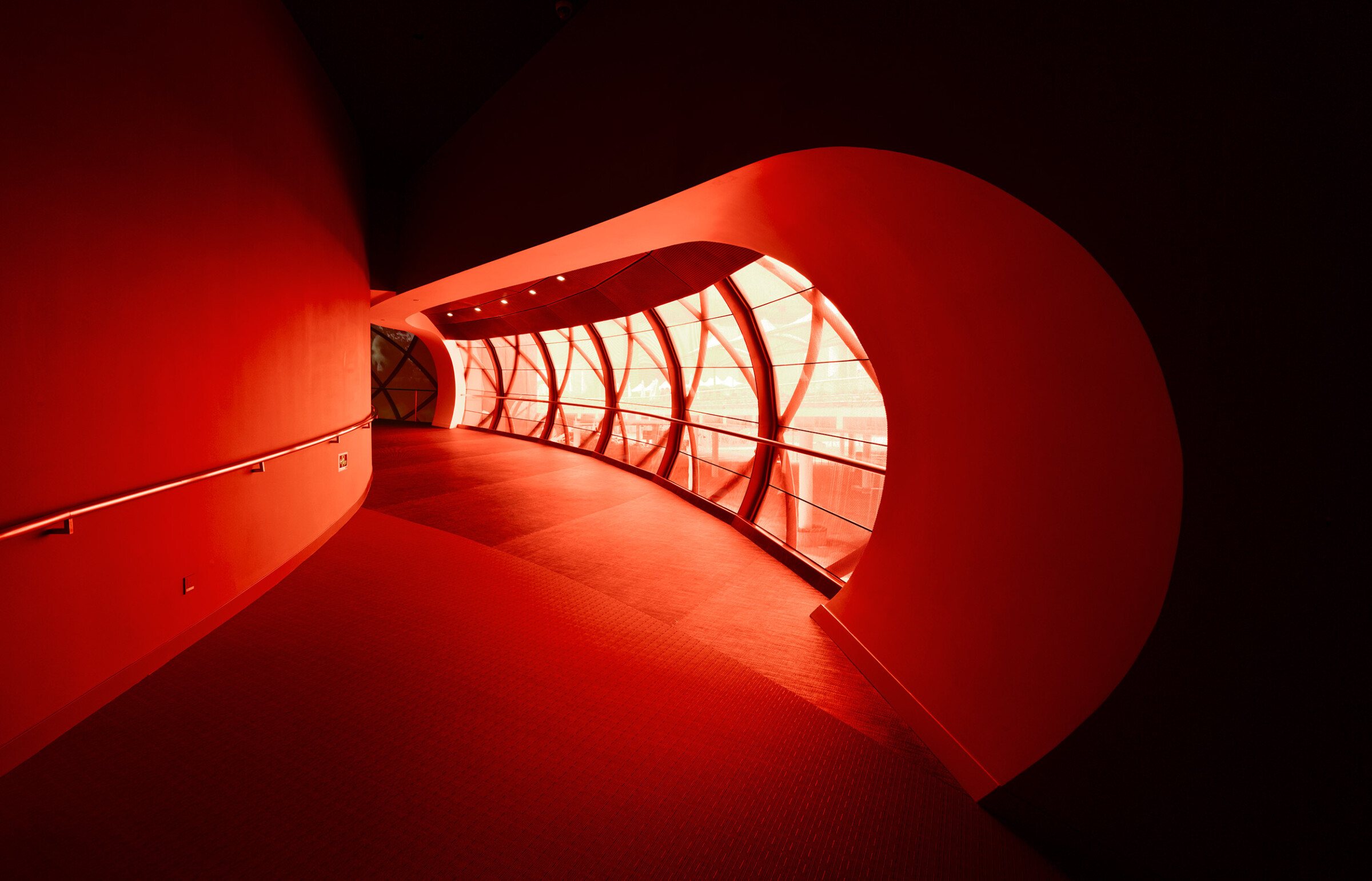
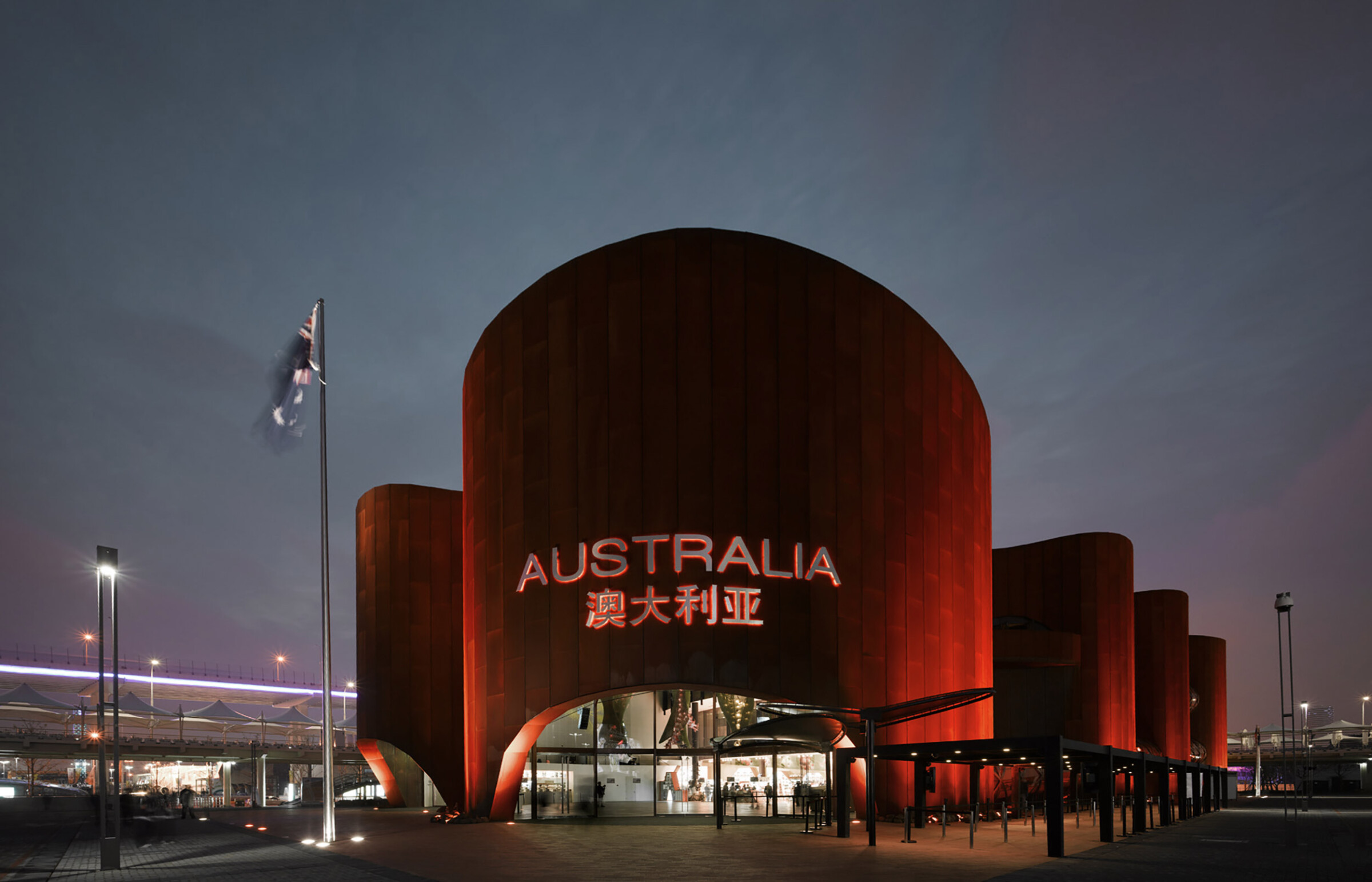
Australian Pavilion
World Expo Shanghai 2010 was the largest expo ever staged with over 180 nations taking part and an attendance of over 70 million visitors over a six month period. In this context, the design of the Australian Pavilion is uniquely Australian and captures the attention of visitors by evoking landforms of the outback.
The Australian Pavilion has been designed to read as a bold sculptural form, modern and organic. The sensuous ribbon of the facade generates an undulating form which is designed to have no obvious front, rear or sides. The prominent entry is articulated by large, glazed tears and illuminated signage. The form varies dramatically as one moves through the surrounding streets. Glazed tubular circulation ramps protrude out of the curving façade, providing interest and views for participants and intrigue for passers-by. The singular materiality of the cladding reinforces the form, with the earthly tones of the weathering steel referencing the ubiquitous Australian landscape while the highly sculptural skin expresses the modernity and quality design of our cities. Internally the large performance space and ancillary functions are organised around a full-height internal courtyard giving some drama to the spatial relationships within. The pavilion expresses the duality of the sparse Australian landscape and its densely populated urban centres.
The pavilion is planned around a journey that visitors take to experience the history and identity of Australia through various exhibits, a 1000-person theatre-in-the-round and performance space. The program and design of the exhibits were developed by Melbourne firm Think!OTS. In addition to the public spaces, the pavilion incorporates various VIP spaces over three levels including offices for the Commissioner-General, function spaces and a separate entry with associated display space.
The pavilion is a temporary structure intended to be removed from the site after the Expo closed. The sustainable features for this temporary, high-use public building are centred on the re-use of the key material used in its construction. The primary structure is predominantly a steel frame and the façade panels have been detailed to be easily demountable and reused. The pavilion also incorporates rainwater collection, photovoltaic panels and various power-saving initiatives.
The innovative design exemplifies Australia’s approach to smart manufacturing, design and environmental sustainability, reinforcing Australia’s response to the ‘Better City, Better Life’ expo theme.
